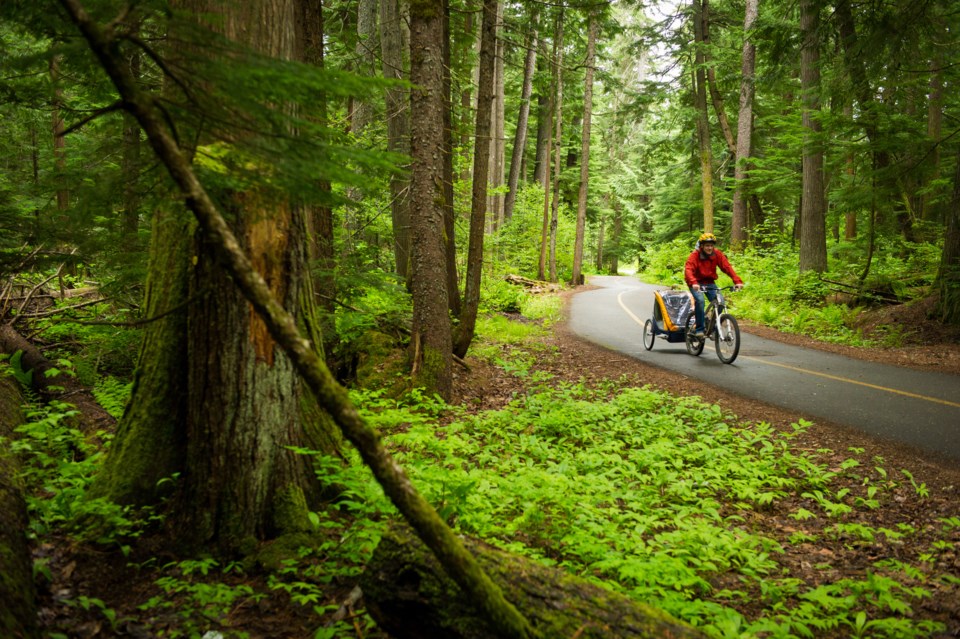Want to help protect Whistler’s Valley Trail network? Thanks to the Sea to Sky Invasive Species Council (SSISC), you can once again adopt your own segment of the Valley Trail this summer to help fend off invasive species.
The community-wide campaign is designed to target Common Burdock, “a pesky, prickly, prevalent invasive plant that can be spotted frequently along the Valley Trail,” the SSISC said in a release.
As part of the SSISC’s Adopt-a-Trail program, residents are invited to “adopt” a short segment of the Valley Trail by committing to remove the Common Burdock plants found in their section during the growing season.
“The Valley Trail is beloved by the Whistler community and visitors alike,” said SSISC executive director Clare Greenberg, in the release.
“This is a great opportunity for community members to become involved in enhancing native vegetation along the trail network to help protect Whistler’s biodiversity, while also getting out in the fresh air.”
Participants (which can include families, businesses, roommates or groups of friends) can visit ssisc.ca/burdock to sign up.
Common Burdock (Arctium minus) is most distinguishable by its purple flower heads that mature into prickly and clinging brown burs, as well as its large wavy-edged leaves. It is not uncommon for trail users to come upon the velcro-like burs stuck to their clothing, gear, and pets. Burs can cling to a variety of materials for many kilometres, and the popularity of the Valley Trail allows it to be a transport corridor for the easily dispersed seeds.
“Burdock plants out-shade and displace native vegetation, and can be a hazard for birds and bats that get tangled up in the burs,” said Greenberg.
The removal of Common Burdock can be done with a mattock or shovel by digging up the taproot. Flowering heads, burs and all plant parts must be bagged and disposed of with general household waste or in the invasive species bin at the transfer station.
“It’s important to avoid composting invasive plants like Common Burdock, because they may survive the composting process and spread further,” Greenberg said.
The SSISC is an environmental non-profit organization committed to minimizing the threat of invasive species in the Sea to Sky corridor.
Read more at ssisc.ca.




